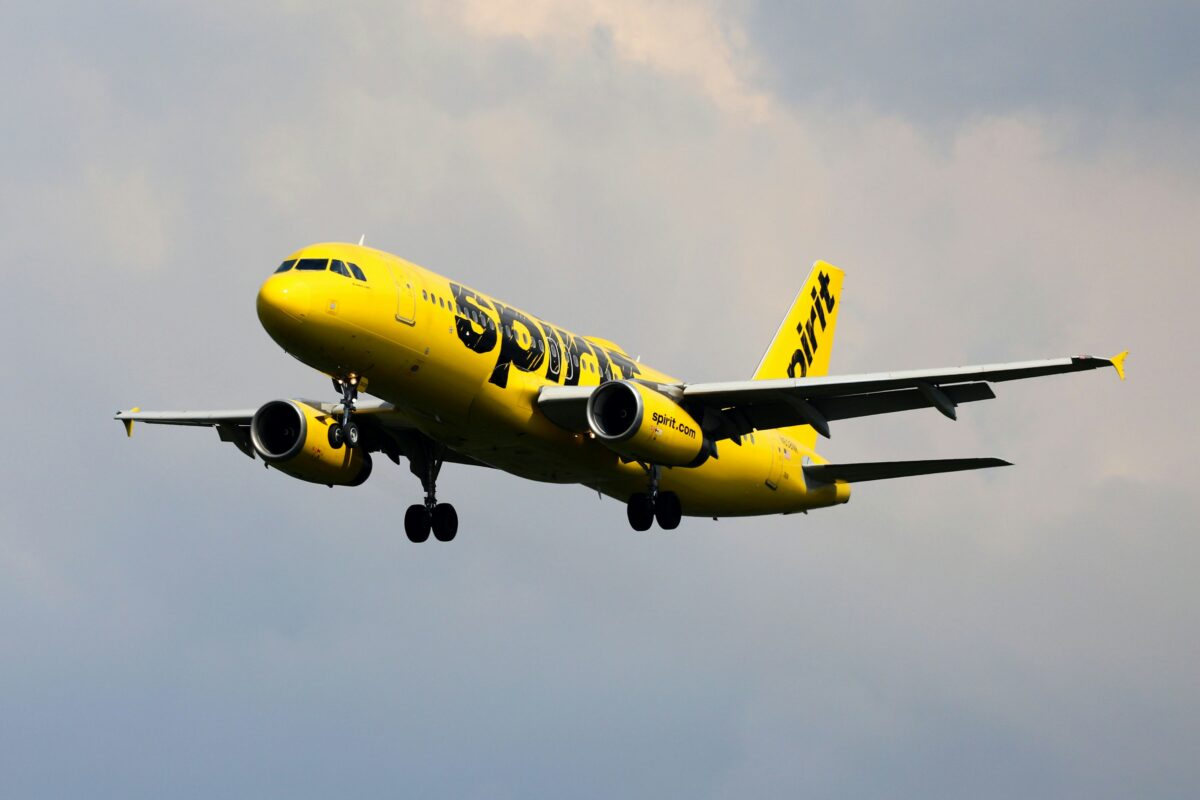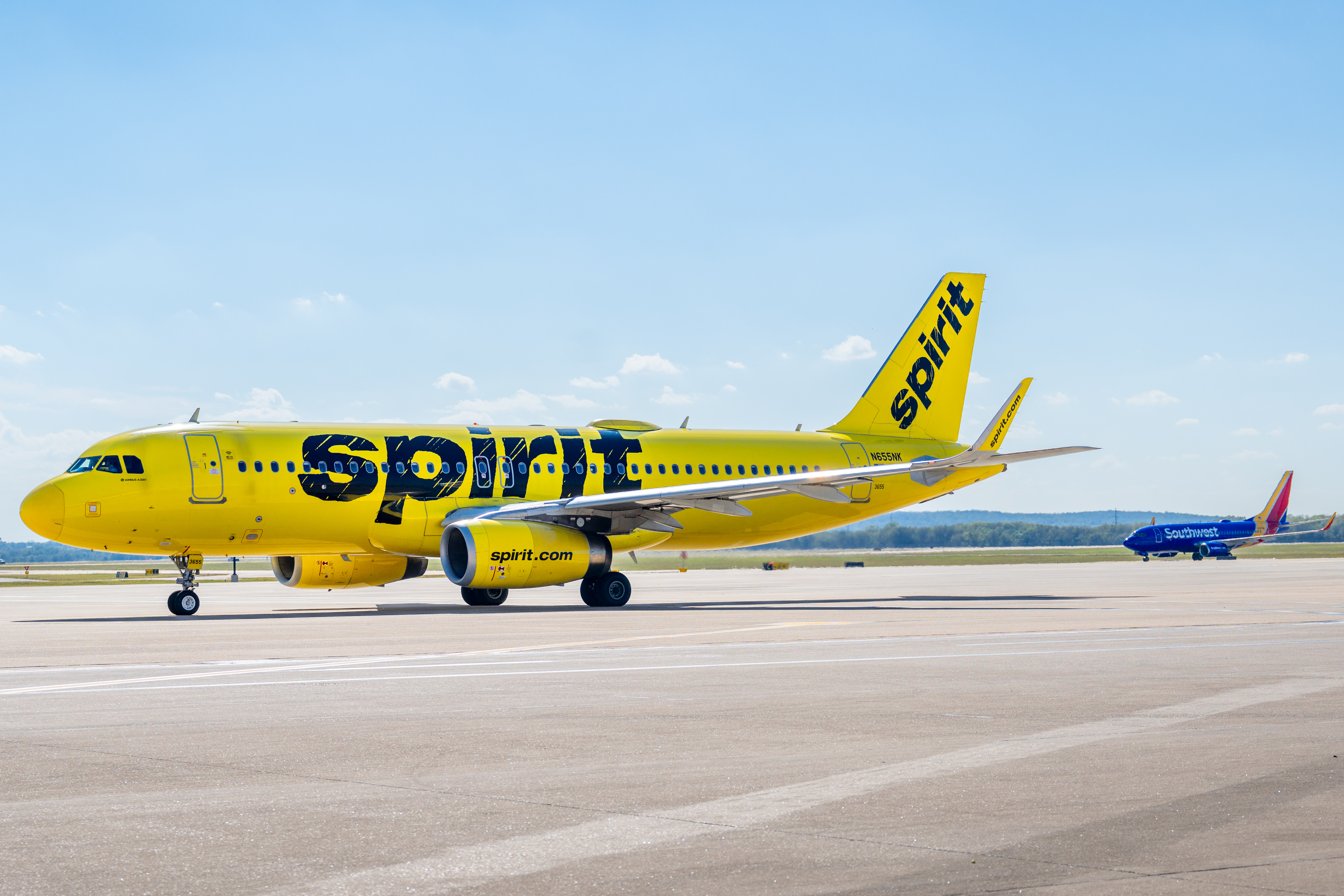It could be the end of an era for budget-friendly travel — at least for now. On Monday, Nov. 18th, low-fair flight company Spirit Airlines confirmed that they’ve filed for bankruptcy protection after making efforts to cut costs all around. Some of their recent steps have included selling 23 Airbus jets and delaying future aircraft deliveries. Sadly, Spirit has also had to furlough hundreds of pilots with plans to cut additional staff in January. In their filing, they confirmed 13,000 full-time and part-time employees, plus 8,000 independent contractors and temporary workers. Things might look dire now, but as CNN notes, American Airlines, United and Delta have all gone bankrupt within the last 25 years, only to bounce back stronger on the other end of negotiations and hard work.
What We Know About Spirit Airlines’ Bankruptcy So Far

CNN cites, “mounting losses, unaffordable debt, increased competition for bargain-seeking airline passengers and the inability to merge with other airlines” as core reasons for Spirit’s bankruptcy. To see them through the turmoil, creditors have agreed to pump $300M into the airline, funding its operations during the process. The U.S. Treasury Department is their second largest creditor; “taxpayers [are] on the hook for a $136 million balance on an unsecured loan,” CNN notes. This debt is due in 2025 and 2026, plus previous filings disclosed $3.1 billion in long-term debt due on the company balance sheet.
Spirit Airlines was supported by the federal government during the COVID-19 pandemic through a program which provided funds to flight companies so they could stay in business. Most of this money came via grants, but $21.2 billion was in the form of a loan that’s still far away from repayment.
Spirit Airlines Stock Began Plunging Last Week
The budget brand expects to be delisted from the New York Stock Exchange “in the near term,” they said on Monday. Their common stock will likely be canceled and have no future value as part of the debt restructuring. Last week, Spirit Airlines announced it was in talks with creditors and unable to complete third-quarter financial reports until those negotiations. This caused shares to plumit 59% on Wednesday (Nov. 13) and another 18% on Friday (Nov. 15) when they shared bankruptcy filing was imminent.
In 2024 so far, Spirit has lost an astounding 93% of its value. The first six months of the year reported operating losses of $360 million – over four times the losses they confirmed in the first half of 2023.
Could Another Airline Buy Spirit?
After witnessing The Onion buy Alex Jones’ InfoWars earlier this month, anything is possible. If a bigger company doesn’t purchase Spirit, they could be forced to liquidate to pay their debt. This could be good for them in the long run, considering American Airlines previously had their assets purchased during bankruptcy, leading them to merge with another airline.
Spirit has twice attempted to merge their company while facing mounting debt. The first time was with Frontier Airlines, another bargain option, but JetBlue Airways eventually topped their offer. However, a federal judge later blocked the purchase on antitrust grounds, leaving Spirit to face the music. As America prepares for president-elect Donald Trump’s return to the White House, it’s possible his Justice Department might be more interested in corporate mergers than the Biden administration has been.
How Will Travel Be Impacted?
For now, Spirit Airlines plans to operate as normal while restructuring debt. “Guests can continue to book and fly without interruption and can use all tickets, credits and loyalty points as normal,” they shared in a statement. The company’s hope is to emerge in 2025 with “reduced debt and increased financial flexibility that will position Spirit for long-term success and accelerate investments providing guests with enhanced travel experiences and greater value.”
Even with the positive tone behind executive’s messaging, travelers should note that the downfall of Spirit Airlines (even if only temporary) could cause flight costs to rise country-wide. When the budget-fare brand was at its peak, major airlines began offering “basic economy” seats on flights to compete. If they scale back flights, go out of business or are purchased by another airline, pressure for others to reduce their fees will drop.

